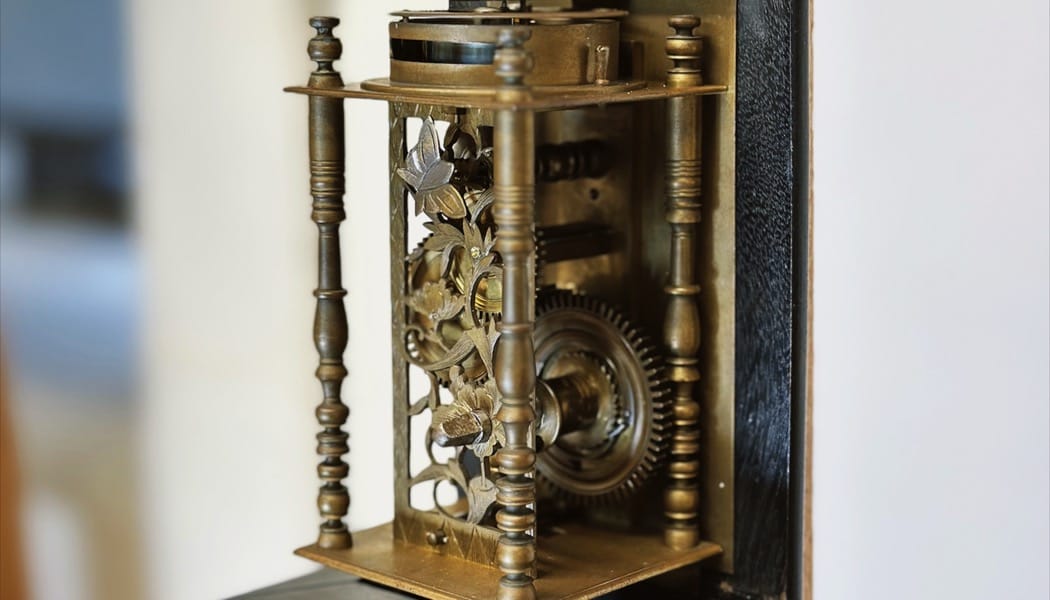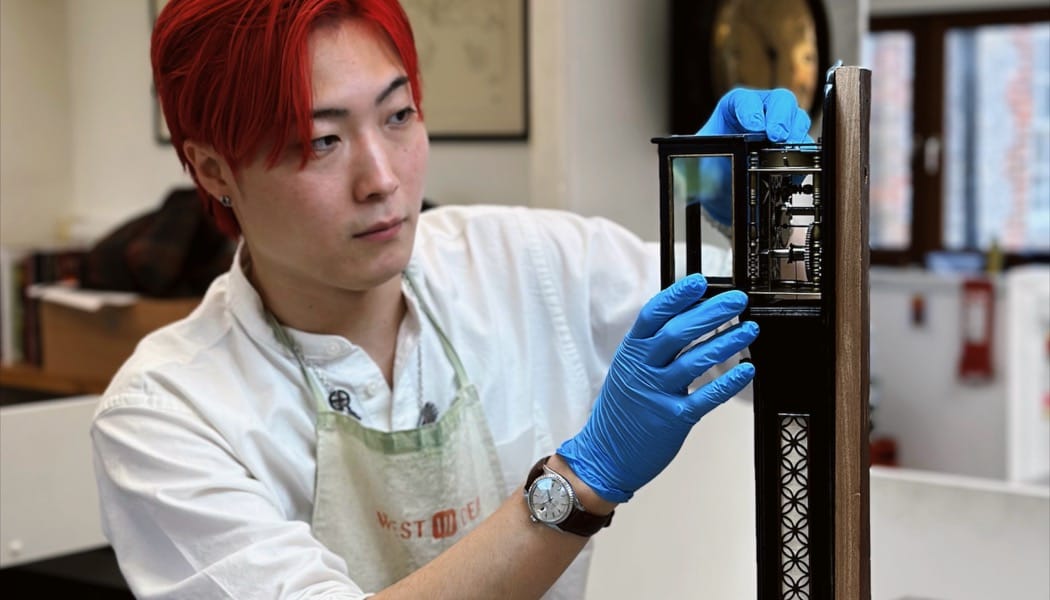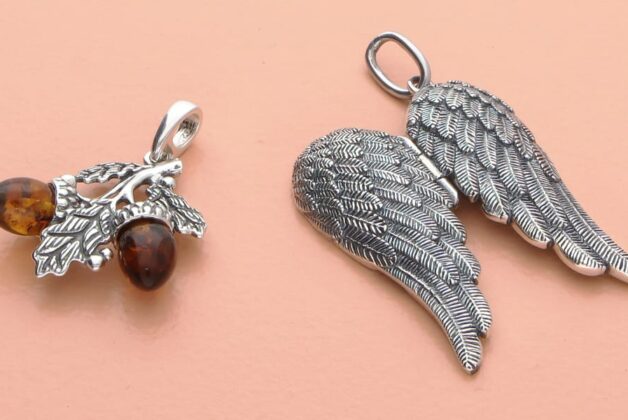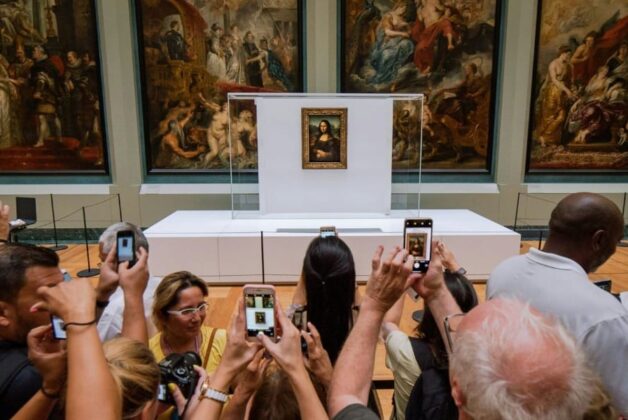Image: West Dean College
West Dean College explains how a student restored rare weight-driven Shaku-Dokei using traditional techniques to preserve horological heritage.
Currently studying horology at the internationally renowned West Dean College in West Sussex, UK, Takumi Hamano shares the story of his ambitious project restoring a rare Japanese clock. Drawing on his background in watchmaking from Japan and his growing expertise in clock conservation, Takumi reflects on his personal journey, the cultural and historical importance of Wa-Dokei, and the process involved in bringing this unique timepiece back to life.
Konnichiwa! My name is Takumi, a second-year clockmaking student at West Dean College, studying as part of the Foundation Degree course in Horology. After graduating from a watchmaking school in Japan, I worked as a watch and clockmaker before moving to the UK. Inspired by the restoration work of Big Ben, I pursued my dream of becoming a clockmaker in the UK.
During my studies, I have gained hands-on experience, from learning basic skills in the first year to taking on more complex repair projects in my second year. Most recently, I had the privilege of restoring a Wa-Dokei (a traditional Japanese clock) Since this type
of clock is deeply connected to Japan’s unique timekeeping system, I’d love to share both the historical background of Japanese clocks and the restoration process.

The History of Wa-Dokei
The history of Wa-Dokei, traces back to the 15th century when mechanical clocks were first introduced to Japan by Portuguese traders. Over the centuries, Japanese artisans adapted these clocks to suit the unique temporal system known as Futei Jihō, which divided the day and night into six equal parts, with the length of each part varying by season. Unlike the fixed hours of Western clocks, the Japanese system reflected the rhythms of nature, with the length of each “hour” changing throughout the year.
A key feature of these timepieces was their time display. Clocks used the traditional Japanese units of time such as Kokonotsu (九: 9), Yattsu (八: 8), and Nanatsu (七: 7), all of which reflected Japan’s unique system. The clock’s striking mechanism was also adjusted to match the seasonal variations in timekeeping.
The Shaku-Dokei
The clock I recently had the honour of restoring is a Shaku-Dokei, a weight-driven clock that embodies Japanese ingenuity. Unlike Western clocks with rotating hands, the Shaku-Dokei uses a vertically arranged time scale. As the weight descends, a time indicator moves down the scale, showcasing the time in a linear fashion.
The Shaku-Dokei is powered by a balance wheel, which is still widely used in modern mechanical watches. This mechanism ensures consistent and accurate timekeeping, demonstrating the precision of Japanese horological craftsmanship.
The clock’s design reflects a profound understanding of both mechanical engineering and cultural tradition. Despite being a relatively simple mechanism compared to other more complex clocks, the Shaku-Dokei remained a luxury item, often owned by the Samurai elite during the Edo period.

The restoring process
Restoring this clock was a meticulous and rewarding experience. The Shaku-Dokei had been partially repaired by a previous student, so the overall condition was relatively good. The restoration process began with complete disassembly to assess the clock’s internal condition.
Key stages of the restoration included:
Cleaning and Disassembly: I carefully removed rust from the metal parts and cleaned each component. I also ensured that the moving parts were functioning correctly before beginning the repairs.
Repairing and Recreating Missing Parts: A small drawer knob was missing, and some screws were malfunctioning. Using a lathe, I machined new components and even hand-crafted a graver to ensure precision. I also consulted with a metal conservation tutor to match the colour and finish of the original knob using oxidation techniques.
Reassembly: Once all components were repaired, I carefully reassembled the clock, adjusting deformed components such as the friction spring and stop-work plate. The clock was tested thoroughly to ensure everything functioned as originally designed.
The most rewarding aspect of this restoration was crafting a new brass component from raw materials and bringing this historical timepiece back to life. It was an honour to contribute to the preservation of Japan’s horological heritage.
Reflection
Moving from Japan to the UK posed several challenges, from cultural differences to adapting to British clockmaking techniques. Yet, as I worked on the Wa-Dokei, I realised how much my cultural background had enhanced my understanding of these traditional timepieces. My knowledge of Japan’s unique timekeeping system and my fluency in the language gave me an edge in restoring this clock.
This experience has deepened my pride in Japan’s horological history and increased my passion for restoring and preserving these rare, historical timepieces. I am eager to continue exploring Japanese clocks and ensuring their legacy endures for future generations.
The restoration of this Wa-Dokei is not just a personal achievement, it is a small step in preserving Japan’s remarkable horological heritage. Today, many traditional Japanese clocks are rare and costly, often auctioned off to private collectors. The majority of Wa
Dokei were sold overseas during the late Edo and early Meiji periods, and many have been lost to time or damaged by Japan’s humid climate and frequent natural disasters.
For those interested in learning more about the restoration of traditional timepieces and Japan’s unique horological history, I hope this project shines a light on the craft that continues to influence clockmaking today.





